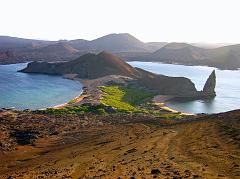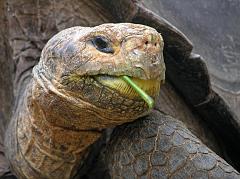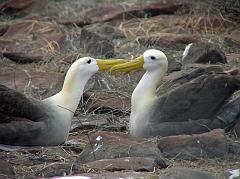
 |
Home | Galapagos Islands References | Contact |
Links To Photos



Links To Photos

Updated: May 2009. Click on an image to see the FULL size with a caption.
Please see separate sections on Quito, Ecuador and Cotopaxi and Chimborazo.
The Galapagos Islands, a province of Ecuador, consists of 13 main islands and 6 smaller islands distributed around the equator, 965km west of Ecuador in the Pacific Ocean. The Galapagos Islands are world famous for their vast amount of wildlife and Charles Darwin's voyage of the Beagle.
The amount and variety of wildlife is astounding, including brightly colored Marine Iguanas, Blue and Red Footed Boobies, Sea Lions, Galapagos Penguins, Turtles, Frigatebirds, and the colourful Sally Lightfoot crabs. What surprised me the most was that the Galapagos are a wilderness where animals have never come to fear people.
Darwin only spent five weeks in the Galapagos Islands, but he later claimed that the Galapagos were the origin of "The origin Of The Species" and a natural laboratory of evolution. Where others had seen a Hell on Earth, Darwin had stumbled on a Garden of Eden.
We need to preserve this Garden Of Eden from their threats of tourism, fishing, introduced species like goats and pigs, and especially from bringing new diseases to the islands.
The Galapagos climate is largely determined by two ocean currents. From December to May the warm waters from the Panama basin cause the warm season with temperatures ranging from 22C to 32C. From June to November the cool Humboldt current creates the dry season with cooler temperatures ranging from 16C to 24C.